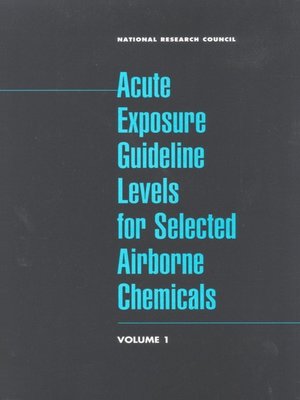Acute Exposure Guideline Levels for Selected Airborne Chemicals, Volume 1
ebook
By National Research Council

Sign up to save your library
With an OverDrive account, you can save your favorite libraries for at-a-glance information about availability. Find out more about OverDrive accounts.
Find this title in Libby, the library reading app by OverDrive.



Search for a digital library with this title
Title found at these libraries:
| Library Name | Distance |
|---|---|
| Loading... |
In the Bhopal disaster of 1984, approximately 2,000 residents living near a chemical plant were killed and 20,000 more suffered irreversible damage to their eyes and lungs following the accidental release of methyl isocyanate. This tragedy served to focus international attention on the need for governments to identify hazardous substances and assist local communities in planning how to deal with emergency exposures. Since 1986, the U.S. Environmental Protection Agency has been tasked with identifying extremely hazardous substances and, in cooperation with the Federal Emergency Management Agency and the Department of Transportation, assist local emergency response planners. The National Advisory Committee on Acute Exposure Guideline Levels for Hazardous Substances was established in 1995 to develop acute exposure guideline levels (AEGLs) for high priority toxic chemicals that could be released into the air from accidents at chemical plants, storage sites, or during transportation. This book reviews toxicity documents on five chemicals—chlorine, hydrogen chloride, hydrogen fluoride, toluene, and uranium hexafluoride—for their scientific validity, comprehensives, internal consistency, and conformance to the 1993 guidelines report.







